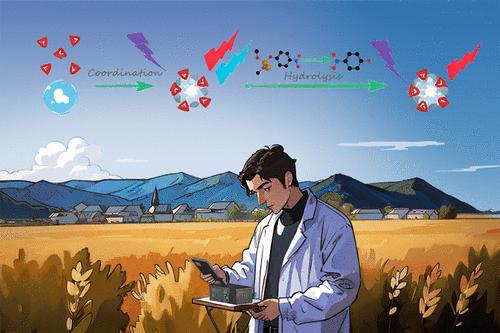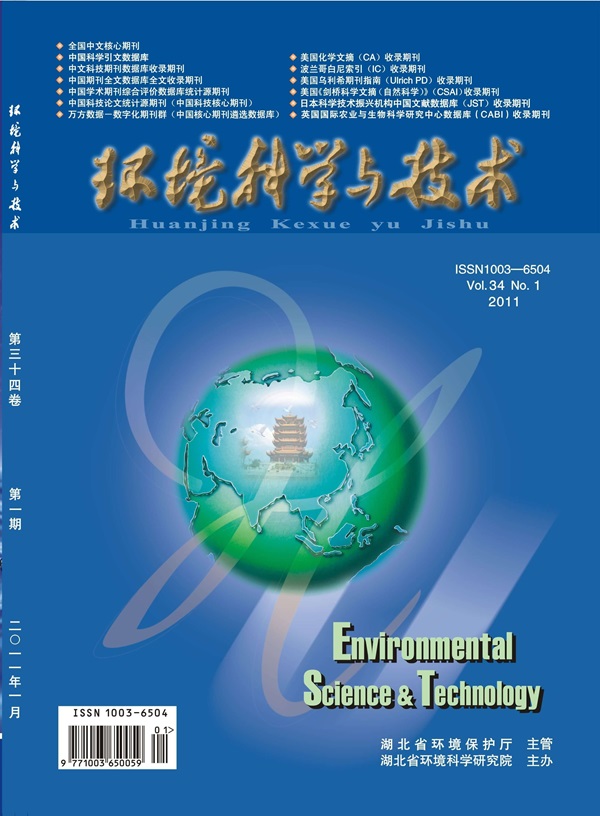Rapid Detection of Methyl Parathion Based on SiONPs-Eu3+ Dual-Emitting Fluoroprobe and Its On-Site Application
IF 10.8
1区 环境科学与生态学
Q1 ENGINEERING, ENVIRONMENTAL
引用次数: 0
Abstract
Herein, we pioneered an innovative methodology for the rapid identification and quantitation of methyl parathion (MP) residues, overcoming the drawbacks of existing methods such as poor selectivity, high costs, and intricate operational procedures. A dual-emitting fluoroprobe SiONPs-Eu3+ was engineered based on silica oxide nanoparticles (SiONPs) conjugated with Eu3+, and the synthetic conditions were meticulously optimized to ensure exceptional sensitivity and selectivity to 4-nitrophenol (4-NP), one of the MP hydrolytic products. Upon excitation at 317 nm, the blue fluorescence of SiONPs at 400 nm was quenched, while the red fluorescence of Eu3+ at 616 nm remained nearly unchanged, constituting a ratiometric fluorescent change that significantly enhanced the detection stability. The fluoroprobe rapidly detected 4-NP at concentrations below 80 μM within 10 s and gave a limit of detection (LOD) as low as 0.16 μM, markedly lower than the allowable residue limit of MP in China food safety standards. Also, it exhibited excellent anti-interference properties in complex matrices, remaining unaffected by common amino acids, cations, and pesticides. The underlying mechanism of the fluoroprobe was elucidated through time-dependent density functional theory (TD-DFT) calculations. Under optimized hydrolysis conditions, the detection of MP in real rice samples was successfully achieved. Furthermore, the self-developed and dual-channel portable device was conducive to on-site fluorescence detection of 4-NP, offering enhanced stability in contrast to traditional photography-based methods.

基于 SiONPs-Eu3+ 双发射荧光探针的甲基对硫磷快速检测及其现场应用
在此,我们克服了现有方法选择性差、成本高、操作程序复杂等缺点,开创了一种快速鉴定和定量甲基对硫磷(MP)残留的创新方法。我们在氧化硅纳米颗粒(SiONPs)与 Eu3+ 共轭的基础上设计了一种双发射荧光探针 SiONPs-Eu3+,并对合成条件进行了精心优化,以确保对 MP 的水解产物之一 4-硝基苯酚(4-NP)具有极高的灵敏度和选择性。在 317 纳米波长的激发下,SiONPs 在 400 纳米波长处的蓝色荧光被淬灭,而 Eu3+ 在 616 纳米波长处的红色荧光几乎保持不变,构成了一种比率荧光变化,大大提高了检测稳定性。该荧光探针能在 10 秒内快速检测出浓度低于 80 μM 的 4-NP,检测限(LOD)低至 0.16 μM,明显低于中国食品安全标准中 MP 的允许残留限量。此外,它在复杂基质中表现出优异的抗干扰性能,不受常见氨基酸、阳离子和农药的影响。通过时间相关密度泛函理论(TD-DFT)计算,阐明了该荧光探针的基本机理。在优化的水解条件下,成功实现了对真实大米样品中 MP 的检测。此外,自主研发的双通道便携式装置有利于现场荧光检测 4-NP,与传统的照相法相比,稳定性更强。
本文章由计算机程序翻译,如有差异,请以英文原文为准。
求助全文
约1分钟内获得全文
求助全文
来源期刊

环境科学与技术
环境科学-工程:环境
CiteScore
17.50
自引率
9.60%
发文量
12359
审稿时长
2.8 months
期刊介绍:
Environmental Science & Technology (ES&T) is a co-sponsored academic and technical magazine by the Hubei Provincial Environmental Protection Bureau and the Hubei Provincial Academy of Environmental Sciences.
Environmental Science & Technology (ES&T) holds the status of Chinese core journals, scientific papers source journals of China, Chinese Science Citation Database source journals, and Chinese Academic Journal Comprehensive Evaluation Database source journals. This publication focuses on the academic field of environmental protection, featuring articles related to environmental protection and technical advancements.
 求助内容:
求助内容: 应助结果提醒方式:
应助结果提醒方式:


